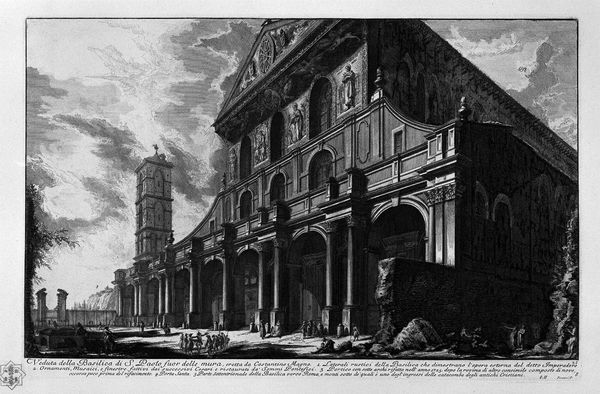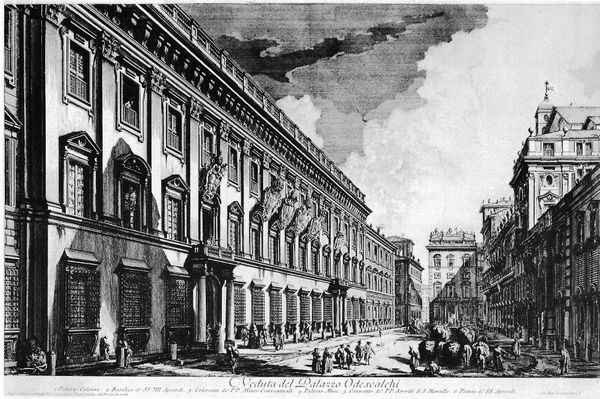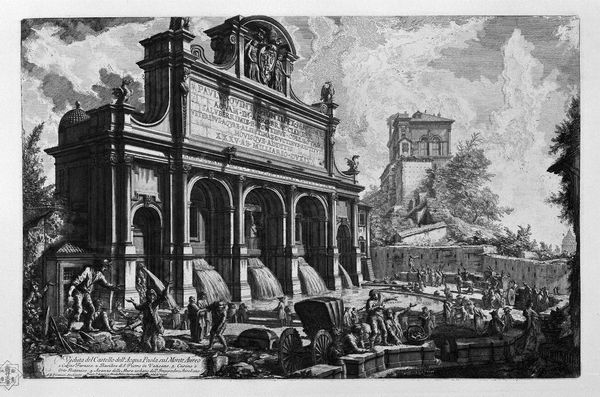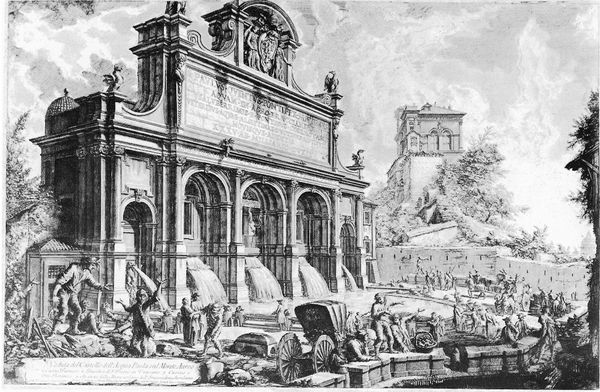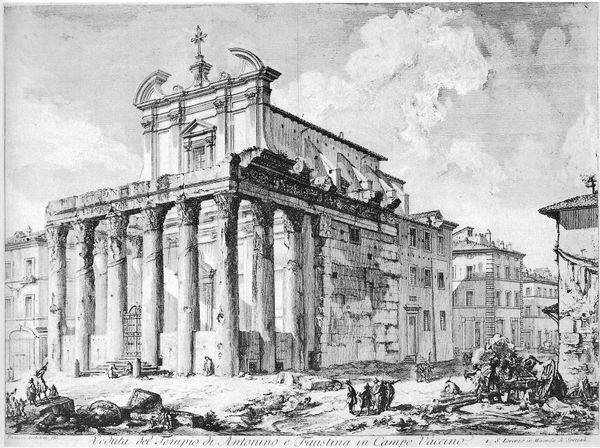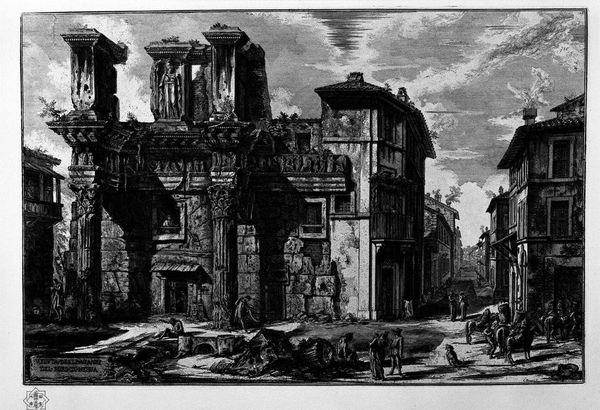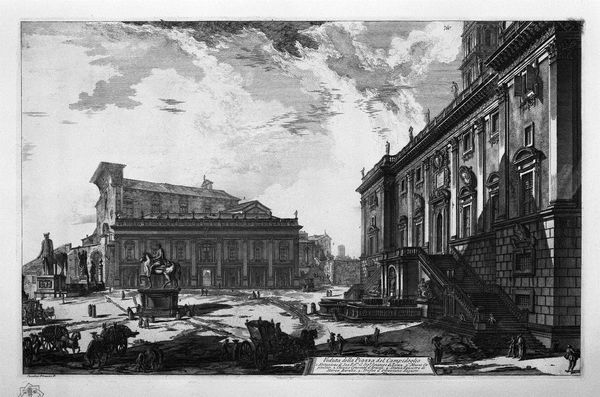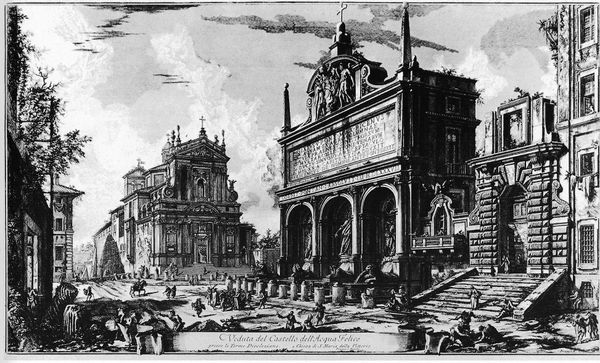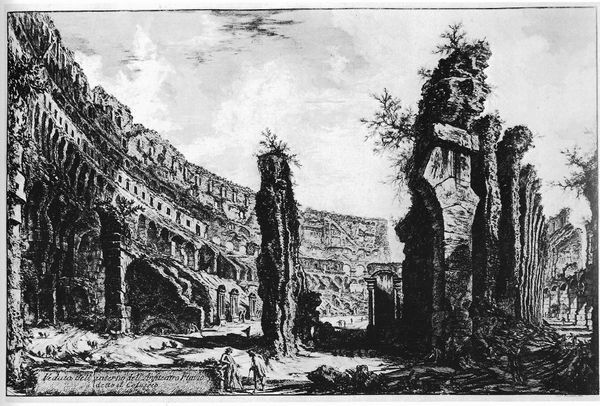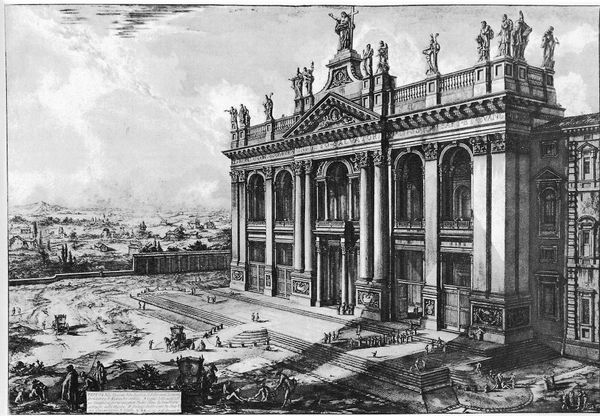
drawing, print, etching, ink, engraving, architecture
#
drawing
#
baroque
# print
#
etching
#
perspective
#
ink
#
cityscape
#
history-painting
#
engraving
#
architecture
#
building
Copyright: Public domain
Editor: Here we have *Vedute di Roma* by Giovanni Battista Piranesi, made with etching and engraving. The sheer scale of the building is really striking, and the printmaking technique makes all the architectural details pop! What stands out to you about it? Curator: The lines upon lines etched into this print highlight the labor involved. We're not just seeing a representation of architecture; we are seeing the production of art itself. Consider the social context: prints like these were commodities, reproduced and consumed by Grand Tourists eager to take a piece of Rome home. What does the choice of this basilica, with its then-crumbling facade, suggest about the relationship between art, capital, and historical narrative? Editor: So, it’s less about the grandeur of the building itself and more about the work and its cultural moment? How would the consumers perceive this image? Curator: Precisely. And note the architectural drawing. It elevates draftsmanship. The aquisition of these views could allow someone to "know" a site simply by studying its depiction, furthering its capital. Piranesi's manipulation of perspective and dramatic use of light amplify this effect, creating a commodity that embodies both artistic skill and the allure of ancient Rome. Editor: I hadn’t thought about it as a physical object traded for capital. It's like the print itself becomes a little piece of the Roman Empire being bought and sold. I’ll definitely consider that going forward. Curator: Seeing art as a material object, entangled in social and economic systems, gives us a richer understanding of its value. Every choice of material and process reflects power dynamics and cultural values.
Comments
No comments
Be the first to comment and join the conversation on the ultimate creative platform.
